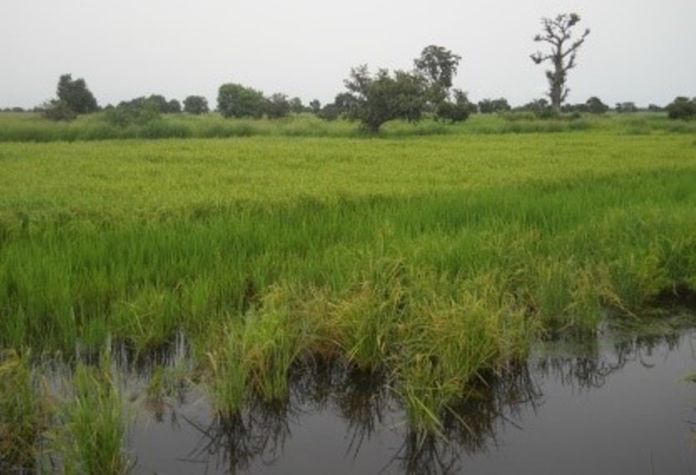Abdoulai G. Dibba
Rice production is in gradual and general decline, when the national rice requirement for Gambians as their staple food, continues to increase.
According to a pre-harvest assessment report for the 2019/2020 cropping season from the Agriculture Ministry and other Development partners, crop production was negatively impacted due to some delay and the erratic rainfall pattern in most parts of the country, coupled with pest’s infestation of some crops such as maize by the ‘‘fall’’ army worm. The report further indicates that crop production levels in all regions have declined by fifteen percent as compared to fifty-three percent in 2018.
According to the report, when the national rice requirement was 341,567 metric tons in 2014, Gambia produced only 46,672 metric tons; that in 2015, the country produced 69,794 metric tons while the national rice requirement was 352,541 metric tons; that in 2016, Gambia produced 48,778 metric tons while the national rice requirement was 363,675 metric tons and in 2017, Gambia produced 29,967 metric tons while the national rice requirement was 375,017 metric tons. The assessment report further disclosed that in 2018, Gambia produced 26,413 metric tons while the national rice requirement was 386,582 metric tons; that in 2019, Gambia produced 22,706 metric tons while the national rice requirement was 398,364 metric tons.
According to the assessment report, the national rice requirement for 2.2 million Gambians in 2020 is estimated at 398,364 metric tons for rice showing a deficit of about 375,658 metric tons for the year. To close this production gap, the assessment report will require the development of a joint response plan by the Government of the Gambia and international development partners such as FAO, WFP, AAH, AATG, etc., for relief assistance.


















